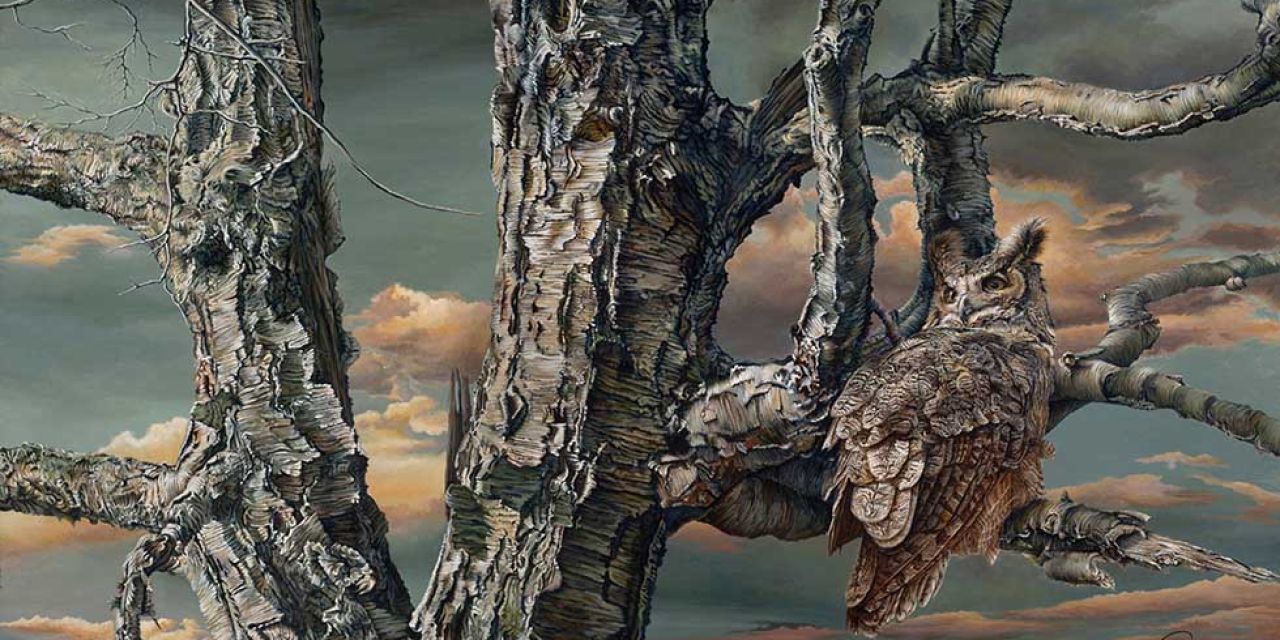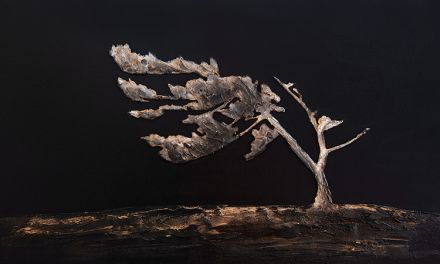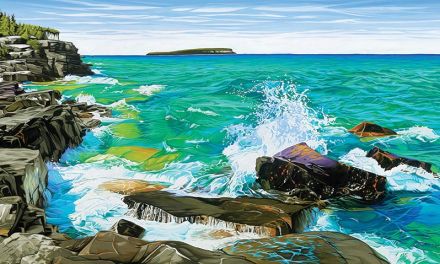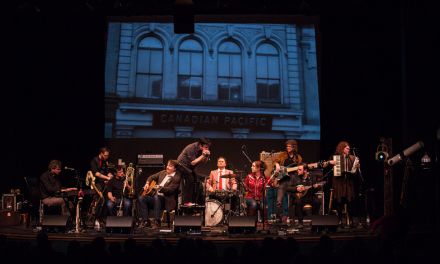Into the Wild
Words by Deena Dolan
On a journey of discovery with a passion to tell a visual story, Harvey Bodach has explored wilderness zones throughout the globe—observing the natural world and its wildlife. His passion, focus, and inspiration drive him to recreate and share his own experiences with truthful accuracy and detailed realism through his art.
Positively awestruck by the natural world, Canadian landscape and wildlife artist, Harvey Bodach is enthralled with its diversity, complexity, and beauty. His reverence for wilderness landscapes and wildlife is translated flawlessly using minute detail and careful design within his paintings. Harvey considers himself an uninvited guest when travelling through remote areas looking for subject matter; “I become aware that I am a stranger, an uninvited guest with tensions arising, but soon nature embraces me when my motives are proven pure. It is at this time that I become a witness to a spectacular drama, the wildlife and their interactions on a stage which is the landscape—all perform a wonderful play before my eyes.” His determination for recording what he sees is palpable. “The artist within me wants to preserve the experiences, the memories that I have been privileged to have had, by recording them in shorthand first with sketches and photography in the field. Moreover, the artist within wants to understand the mysteries that are life on earth, then by paintings, sculpting and drawings, express it in art.”
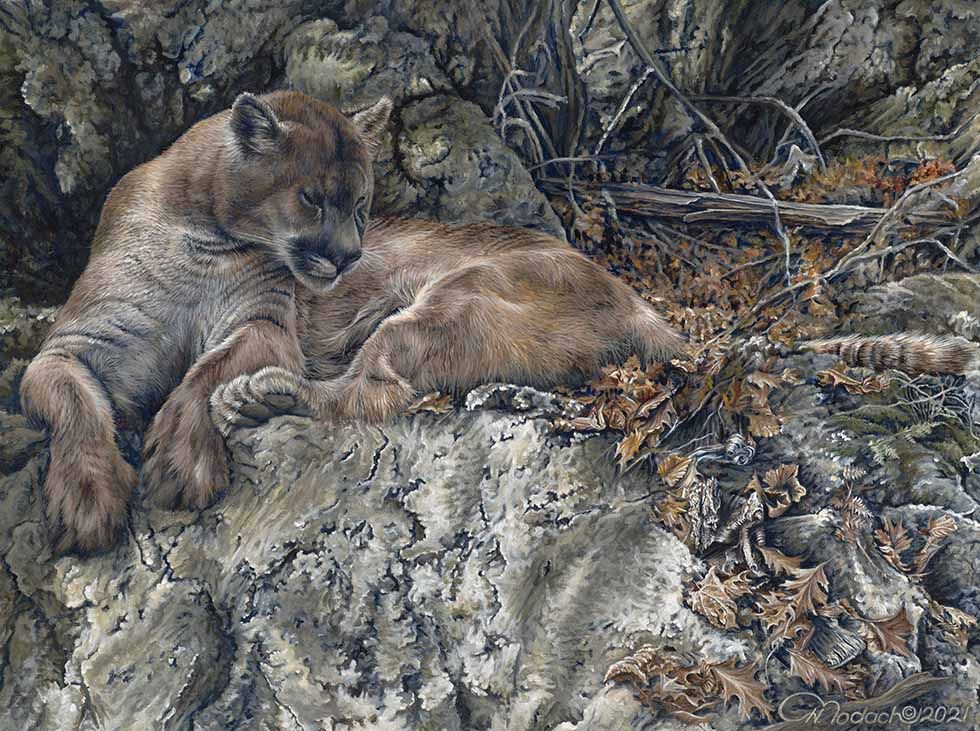
Always seeking the unusual, Harvey’s favourite landscapes are ones that leave a lasting impression, mysterious in their shape and design, invoking a sense of respect and awe. “I paint major compositions with this in mind, directing the eye of the viewer through every important part of the painted surface, like an orchestra leader directing each player.”
“With wildlife, there is something to be said about the portraying of the majestic. The Bald Eagle with wings stretched out and soaring through the sky, an Osprey or the Belted King Fisher diving into the water for fish and stretching wings out for flight, even the Lynx springing through the snow after a Snowshoe Hare with its thick winter coat. They really stand out in a painting like a pedestal. There is also something to be said about seeing the mysterious; like a cottontail rabbit hidden in winter grasses that can surprise the traveller. Even the comical; seen with a chipmunk traversing a branch hanging over water, then falling in and having to swim back to shore.”
Harvey truly perceives the landscape as a stage and the wildlife its characters. “In my landscape and wildlife art, both need to work in concert with each other. Facts and details need to be accurate and truth its foundation. The interaction of both is what I want to understand first, then paint in order to share my story. The technical challenges that come with each work of art are for me the seeds growth as an artist, because I strive to be better— nearly perfect—before signing.”
As a child, Harvey describes himself as having been, “self- motivated, energetic, curious and creative.” Growing up in Toronto, firstly on the fringes of High Park then out to the suburbs, he was an overly-active kid—playing baseball, football and hockey, running track and going camping, fishing and exploring parks, zoos and the world at large. “These interests and patterns were laid down early in life and became a foundation for interests and patterns that continue to this day. They helped create a deep passion for creating landscape and wildlife art and are still a major driving force in my life now.”
Public recognition of his budding artistic talents—drawing, painting and building architectural structures—began in elementary school. Then, in high school, the study of art history and post modernistic movements helped refine his perspective and expand his creative mind. He continued perfecting his favoured realism style but also experimented with impressionism, pointillism, cubism and others. School exhibitions brought both recognition and sales.
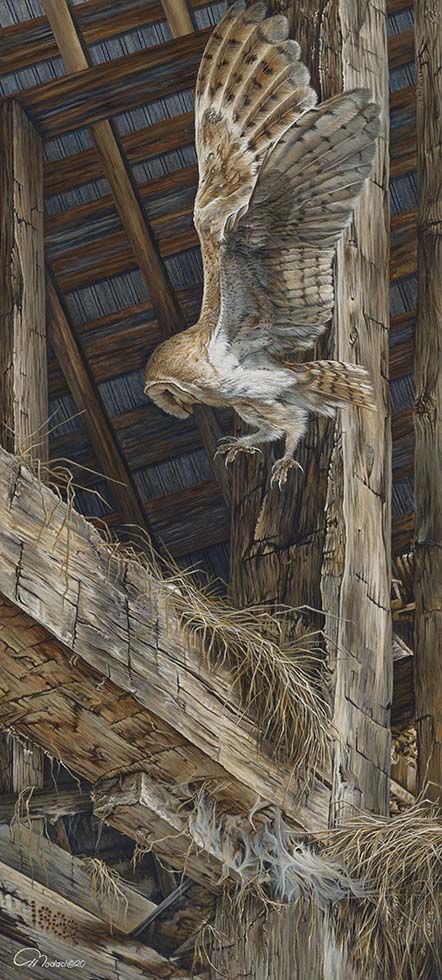
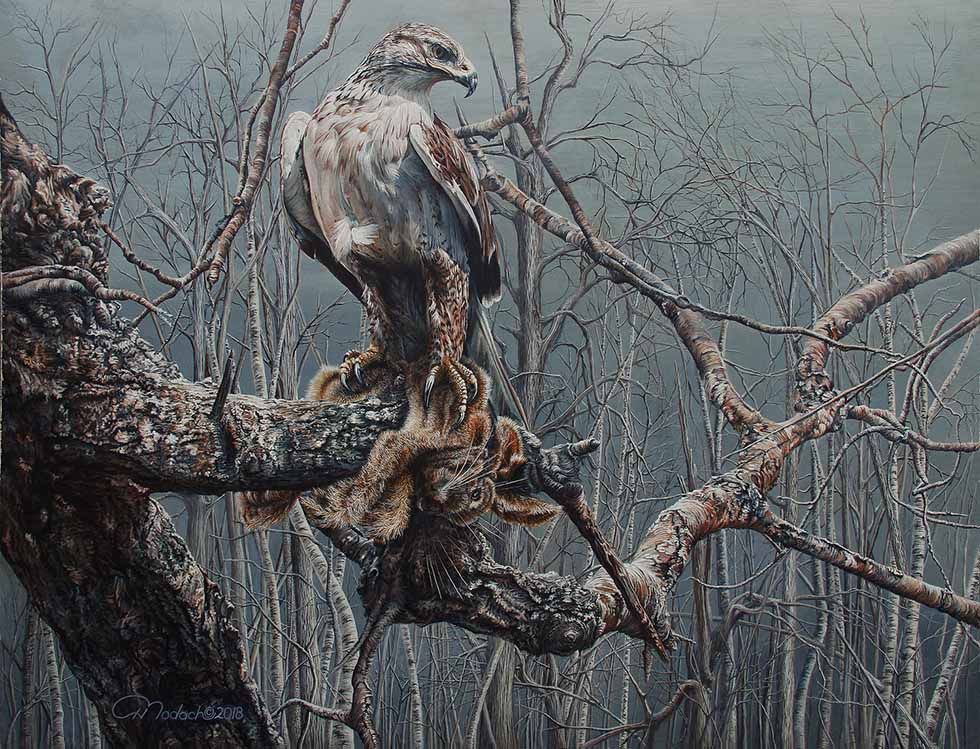
Earning a fine arts honours degree from York University, Harvey was introduced to classic works of the old masters and new mediums for creating structures like wet clay, laminated woods, and fiberglass which were eye opening and remain an influence to this day. Even though the art world was becoming enthralled with the modernist art movement, Harvey’s passion for realism became bolder. “By the end of my undergraduate studies, I had solidified my collection of art heroes—each chosen for reinforcing the passion I had in art, the direction I wanted to take and the style I wanted to work in—that of landscape and wildlife art recreated with a realistic style.” For 18 years Harvey worked commercially as a graphic designer, illustrator and art director (including five years of part-time freelancing in both the visual and commercial arts). Harvey then went on to earn a Bachelor of Education from Brock University as well as additional qualifications in visual arts and technical studies with the Ontario Institute for Studies in Education, University of Toronto and Mohawk College. In 1999, Harvey signed with Peel District School Board and for the next 20 years taught visual arts and multi-media technologies in high school. Retirement brought Harvey and his family to the shores of Georgian Bay in Thornbury and the launch of his now full-time career as an artist.
Always exploring, Harvey has travelled extensively throughout North America, Europe and the Middle East. Equipped with sketch pads, pencils, SLR camera, a backpack, and little else, he was equally as captivated by Israel’s soft morning light as with Northeastern Arizona’s desolate canyon lands. “Landscapes are seen by me as distinct ecological systems in which life thrives or barely survives. They also reflect a rich geological history which at first glance seem puzzling, mysterious, even making one stop to ponder life itself. I look at the landscape as a stage for presenting the wildlife and choose ones that are unusual, distinct, but always in sync with the ecological context. When laying out the design of the composition, I become an orchestra leader who instead of directing the players, directs the eye throughout all the wonderful areas of the landscape.”
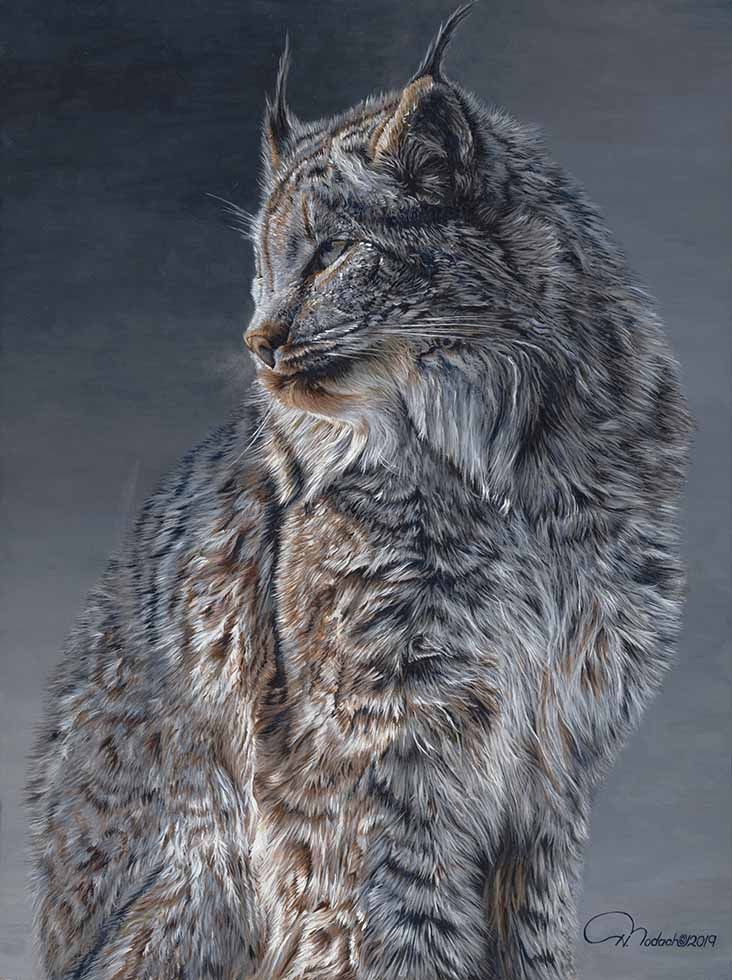
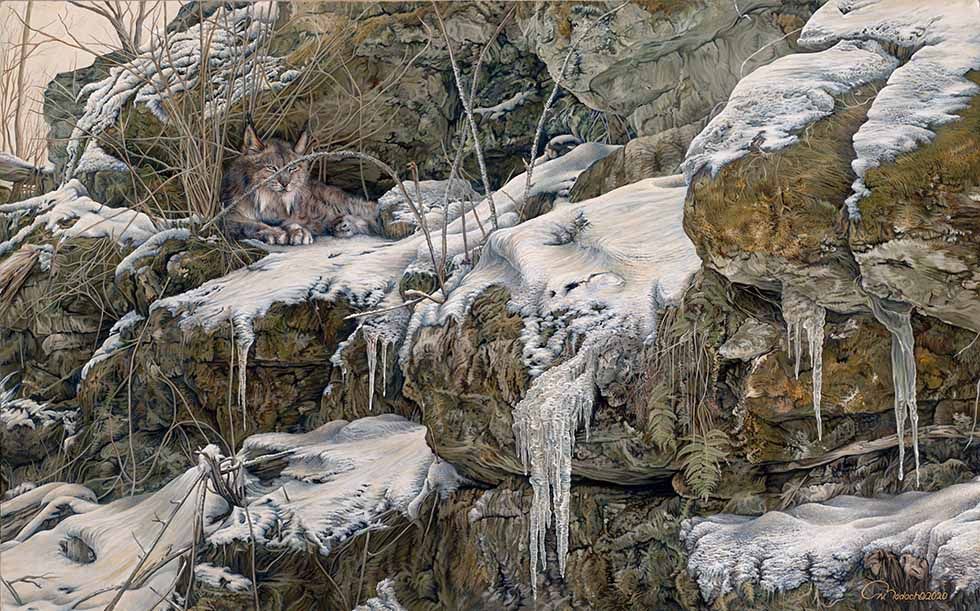
Working primarily with acrylic and oil-based paints as well as watercolours, Harvey produces extensive preliminary sketches and his photos are a key part of the process. His go-to assistant is Photoshop. “It allows me to refine the quality of photos, including colours, shadows, and details which in the end, help perfect the final work.” Because of his realism style, he prefers non-canvas boards for his surfaces and has developed his own system for preparing Masonite boards using multiple layers of gesso to build the ground surface and then sanding them to create a smooth working surface. “This offers better technical control when painting the details of landscapes and wildlife with a realism style,” explains Harvey.
“Before painting on either board or paper, each surface is given an under drawing as a guide that reflects in approximation the overall compositional design of the best sketch which has been tested and proven to work. Changes can still be made at this stage before applying the paint. The next stage is applying either acrylics or oil-based paints to the Masonite board in layers. The first is used to just block in rough shapes, lines and colours over the entire board surface and then to build up the surfaces. There may be between eight or ten layers with this building approach. Both mediums can give you a translucent result, acrylic paint does it with the increased water saturation and oil paint does it with linseed oil. Best results come with the increased level of a layering approach.”
A multiple award winner, you will find a detailed list of Harvey’s accomplishments as well as information about his future plans and exhibitions on his website. Also a sculptor, Harvey produces wildlife moments captured in action using water-based clays, fired once to bisque and painted with acrylics. He plans to expand this area of his art.
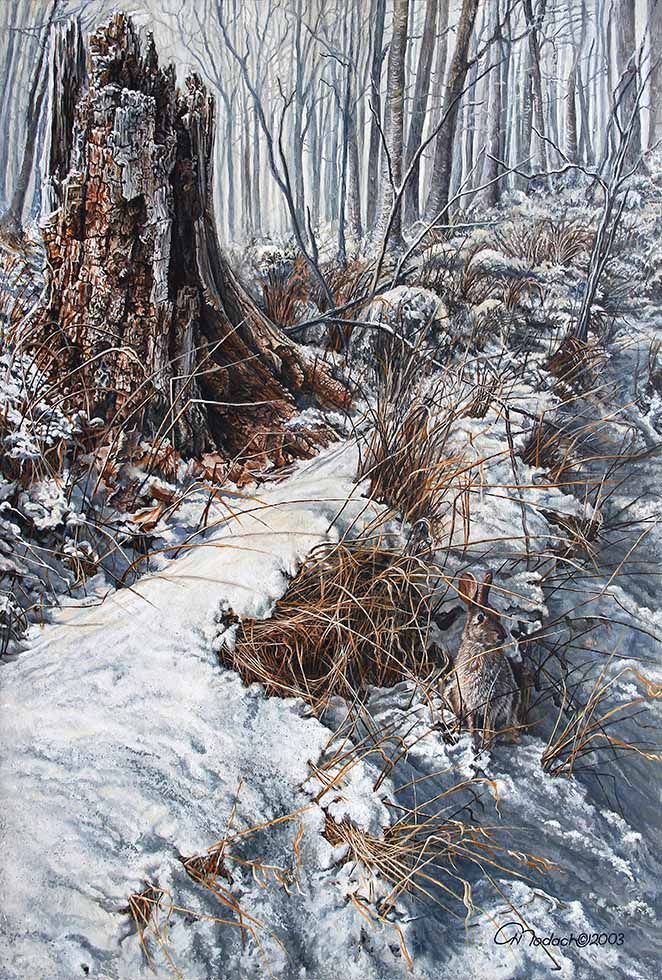
More information about Harvey and his artistic endeavours can be found on his website: harveybodach.com

